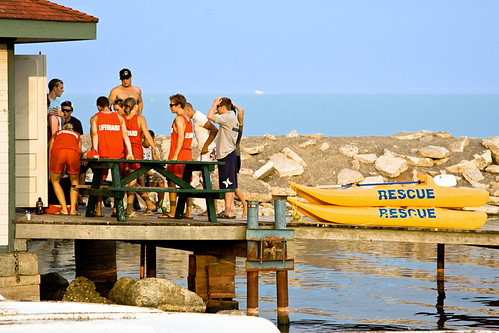Since lifeguards have the responsibility to guard their aquatic patrons’ lives, it’s very important to know how to interact with swimmers while on the job.
While they do provide you with a lot of entertainment opportunities with their Marco Polo and diving board games, they are also most prone to becoming victims of drowning incidents. Since not all kids take swim lessons, it’s essential for you to keep an observant eye on them. I remain especially vigilant when kids are around the three- to four-foot deep water mark, as they can go from being able to touch the bottom with their feet to swimming too far into the deep end, in a matter of mere seconds.
Children often tend to be the swimmers you end up blowing your whistle at the most. In my opinion, some of the most common rules broken by kids are the ones most likely to pose a safety hazard to them. From running on the pool deck (though they may insist they were only skipping) to diving in shallow water, you should stress to children the importance of these rules and their purpose.
If your pool has discipline polices, for example having kids sit out of the pool for a set amount of time, do not hesitate to utilize them. Keep in mind you are a lifeguard—not a baby-sitter—and you should never feel shy about stressing the importance of safety and keeping an eye on their own kids to parents and guardians.
Share




